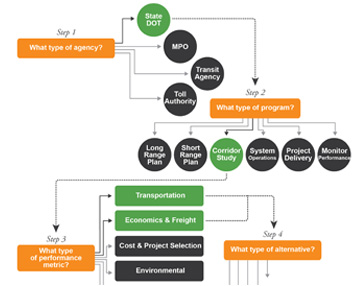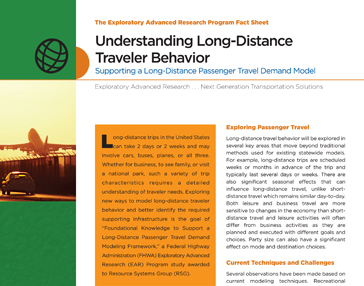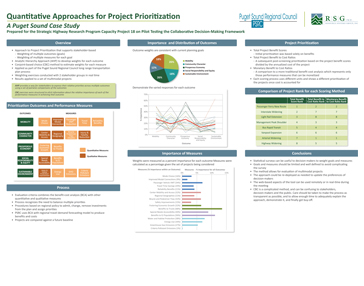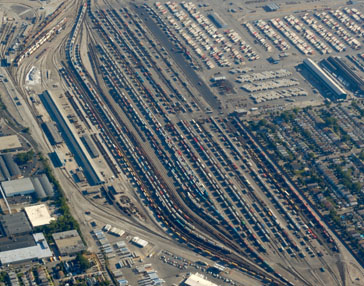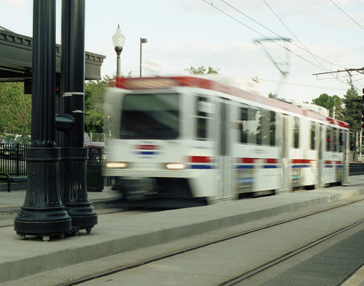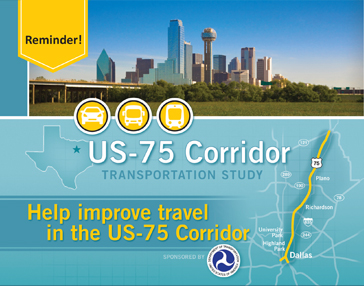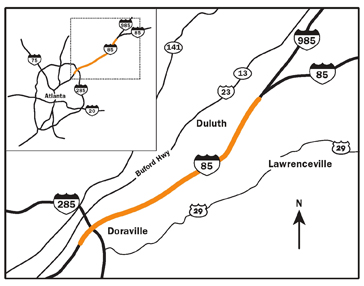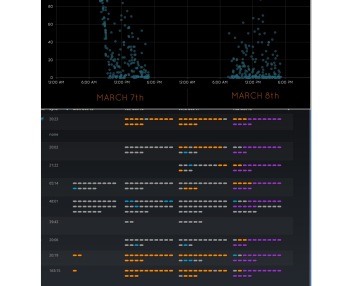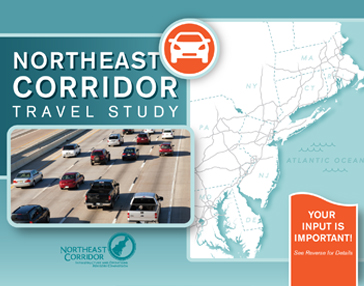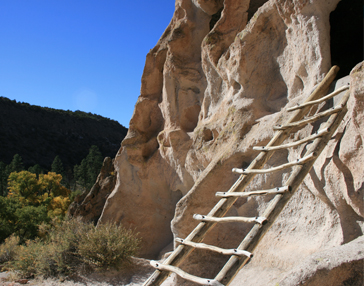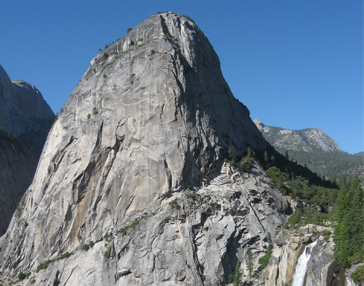Guidelines for Selecting Travel Forecasting Methods and Techniques
There is an ever-evolving set of methods and tools to choose from when developing travel forecasting models to inform planning and policy decisions. However, it is not reasonable or efficient to assume all agencies have the resources and expertise to continually evaluate, select, and defend the appropriate methods and tools for their particular planning and…
Long Distance Passenger Travel Demand Modeling Framework
RSG led a team of academics (from University of Texas at Austin, Arizona State University, Auburn University, and University of Leeds) to develop a framework for a long distance travel demand model that can be used to build a national model for the U.S. This framework included exploration of advanced modeling methods for existing state-wide…
Quantitative Approaches for Project Prioritization: A Puget Sound Case Study
Transportation projects in major metropolitan regions can vary widely in the types of benefits they provide and in the scales of those benefits. Travel forecasting models and related procedures can provide reasonable estimates of those benefits and many of the benefits can be distilled into equivalent dollar benefits using consumer surplus or other valuation approaches….
Tour-based and Supply Chain Modeling for Freight
Despite recent advances in freight and commercial vehicle modeling, the current state of the practice methods are not adequate to address the increasingly complex issues related to freight demand. This project includes research that has combined tour-based truck models and logistics supply chain models for urban commercial vehicle movements, and that has demonstrated a functional…
Characteristics of Premium Transit Services That Affect Mode Choice
The purpose of this research for the Transportation Research Board (TRB) was to describe the most important factors that differentiate premium transit services from standard transit services and to quantify, for practical use, the magnitude of these distinguishing features. The research team’s goals were to improve the transit industry’s understanding of mode choice determinants, and…
Traveler Behavior Longitudinal Panel
As a complement to the Integrated Corridor Management (ICM) Initiative Demonstration projects that are being funded by U.S. DOT, the Volpe Center and RSG are conducting a 2-year online longitudinal survey panel of automobile and transit peak-period travelers who use the US-75 corridor in Dallas and the I-15 corridor in San Diego. The goal of…
Impact of Road Pricing on Traveler Behavior
RSG conducted a study with the Volpe National Transportation Systems Center (Volpe Center) to measure changes in travel behavior in response to road pricing projects in Seattle and Atlanta. The study purpose was to provide an in-depth understanding of all the dimensions of traveler behavior changes at the individual, household, and segment level (such as…
Housing Choice Voucher Admin Fee Study
In partnership with Abt Associates, RSG completed a multi-year research effort for the U.S. Department of Housing and Urban Development’s Office of Policy Development and Research to determine how much it costs to run an efficient Housing Choice Voucher (HCV) program for the purpose of developing a formula for allocating administrative fees. For the project,…
RSG’s Biennial U.S. Air Travel Survey
The U.S. air travel market has changed significantly over the past decade. There is an abundance of data describing how travel patterns have changed over the past several decades. But, there is a corresponding paucity of data that can be used to determine exactly why those changes have occurred and how air services could be…
Northeast Corridor Automobile Origin-Destination Study
Historically, there have been significant gaps in transportation data for intercity auto travel in the Northeast Corridor (NEC). These gaps have limited the understanding of the usage patterns of the NEC’s highway network, and limited the intercity rail models that could be developed using these data. As a result, the NEC Commission sought to conduct…
Transportation Implementation Plan and Environmental Assessment
Bandelier National Monument (BAND) has a history of transportation and congestion management issues during peak visitation periods, including traffic congestion at the Monument entrance and parking shortages. These challenges have been made more difficult by recent wildfires and flooding, which have forced the NPS to temporarily close nearly half of the parking facilities in BAND….
Visitor Use and Safety in the Happy Isles Trail Corridor
Yosemite National Park accommodates nearly 4 million visitors annually, and the Happy Isles Trail Corridor is among the most popular hiking areas in the park. More than one-quarter of park visitors hike in the Happy Isles Trail Corridor, which provides access to iconic park destinations including Vernal Fall, Nevada Fall, and Half Dome. As a…

